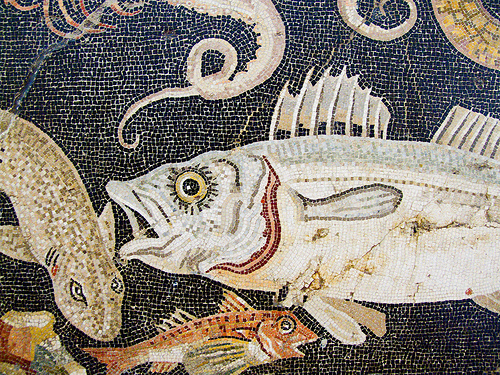One of the most incredible sights in my life was watching angry red streaks of lava etch the side of Mount Etna. I was on my way to the Catania airport during a vicious rainstorm. As the lightning crackled through the dark sky and the burning streams pulsated, the laconic driver assured me in typical Sicilian fashion – “c’è normale” – that’s nothing, it’s normal, it isn’t even a “real” eruption. My heart was racing even though I was safely miles away from the volcano, so awesome was the power of nature.
So I can only imagine how more horrifying the power of Mount Vesuvius was when it erupted in AD 79. But the people of the Bay of Naples still live under its threat, no doubt echoing their Sicilian counterparts in thinking, “c’è normale,” even with the ruins of Pompeii and Herculaneum close by to remind them. Pompeii and the Roman Villa: Art and Culture Around the Bay of Naples, at the National Gallery of Art, cleverly lulls you into a similar state of complacency. The exhibit first highlights the decorative art of Pompeii and the surrounding area, taking you through the various rooms and courtyards of a typical villa of the Roman Empire. Only at the end are you hit with a dark room and depictions of volcanic explosions, a haunting evocation of “La Civita” – the lost ancient city.
